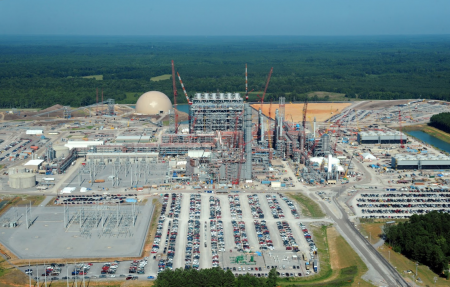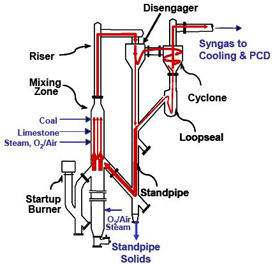November 13, 2017 – At the COP23 meetings in Bonn currently underway, the federal government of the United States is presenting an “alternative facts” narrative about fossil fuels and atomic energy as necessary in the mix of energy choices while tackling climate change. But the flagship “clean coal” project that was to restart coal production and coal-burning power plants is dead in the water.
A 582 Megawatt power plant in Kemper County, Mississippi, that had been under construction since 2010 and was supposed to be up and running by 2015, is no longer going to use coal as its fuel.
Why?
It appears that the cost of implementing the carbon capture and sequestration (CCS) technology through a gasification process has proven to be fraught with design issues and has become far too expensive with costs accelerating from $3 to 7.5 billion since the beginning of the project.

What the plant wanted to do was take advantage of a nearby lignite (brown coal) deposit in Mississippi, estimated to contain 4 billion mineable tons. Lignite, which is the dirtiest type of coal (the type mined in Wyoming), represents about 50% of the entire United States and the world’s coal reserves. A proof of concept that gasified the coal and captured the carbon dioxide (CO2), therefore, would be a stimulus to the moribund mining sector and, as well, an exportable technology that could shopped to countries like India and China.
The technology goes by the name Transport Integrated Gasification, or TRIG (TM). It features a circulating fluidized-bed reactor (see schematic below) that takes in air and adds it to the fuel mix as it burns at exceedingly high temperatures. The carbon capture takes place not in the post-combustion but the pre-combustion phase. It is then chilled to a liquid state and pumped into pipelines which transport it off site to underground storage or to older oil fields where it can be injected into the ground to enhance petroleum recovery.
Kemper was one of two CCS “clean coal” projects that the Environmental Protection Agency was touting as the way forward for the United States in addressing its energy security while tackling greenhouse gas emissions. A technology that has been in the testing phase since 1999, with the Department of Energy and state governments throwing hundreds of millions of dollars at it, appears to have failed. So now instead of coal, the plant will burn natural gas.
But that’s not stopping the American government at COP23 from presenting “clean coal” as viable. The Americans may not want to talk about Kemper, which was to be their bellwether technology presented to the world as a “climate change” solution. Instead, they will showcase another plant, Petra Nova, a retrofitted coal-fired power plant in Texas that uses post-combustion CCS similar to the Boundary Dam Project in Saskatchewan, the first commercial application of this technology.
The real truth, and not the one being presented at COP23, is that CCS technology may be technically viable in the post-combustion phase, but to-date the financial cost has made little sense to the utility companies. That’s why it is the government that takes on most of the financial burden in these projects, and not private enterprise.
In a recent report published by the Global Warming Policy Foundation, a United Kingdom think tank, its author, Gordon Hughes, states, “We have spent countless millions trying to get carbon capture to work for coal-fired power stations. But in the future coal will mostly be used in the developing world, where CCS is going to be too expensive.” He concludes that CCS is “a technology that is both too late and too expensive” describing it as a “utopian dream.”
Donald Trump is a great believer in “clean coal.” I wonder if he also believes in “pixie dust.”
















